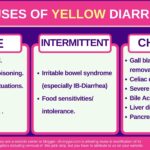Greenish Blue Poop: 5 Common causes.
Our content is not intended nor recommended as a substitute for medical advice by your doctor. Use for informational purposes only.
Sometimes, we experience unusual poop colors such as greenish or blue poop.
The most common cause of bluish-green poop is dietary factors such as green or blue food dyes or colorings. Other causes include severe diarrhea, medications, severe diarrhea, and porphyria.
Greenish-blue poop in newborn infants is considered normal during the first few days and is called (meconium).
Keep reading for the full explanations of all the possible causes of greenish-blue poop.
1. Foods that can cause greenish or blue poop.
Dietary changes are the most frequent cause of greenish-blue poop. Occasional green or greenish-blue poop due to blue or green dyes often lasts for a day or two without other stool changes (such as diarrhea or bloody stools).
Always check for the food you ate before poop color changes.
Foods and drinks that are commonly associated with blue poop:
- Foods containing blue colorings such as blue icing, blue velvet cake, etc.
- Grapes.
- Blueberries.
- Plums.
- Currants.
- Blue liquor.
- Grape sodas.
- Raisins.
Foods and drinks that are commonly associated with greenish poop:
- Green leafy vegetables such as spinach, kale, cabbage, beet greens, etc.
- Food dyes and colors with green colors, such as greenish liquor.
- Green-colored icings such as ice pop with green dyes.
- Drink mixes.
- Natural dyes such as in cucumbers, green grapes, etc.
- Some supplements such as iron.
Symptoms:
- Greenish-blue poop is often associated with excess amounts of one or more foods.
- Often, there is no significant diarrhea (well-formed stool).
- No significant abdominal pain.
- No other symptoms suggest infections or other diseases such as fever, vomiting, etc.
- The greenish-blue poop color is often painless, transient finding that lasts for a day or two.
- Usually, the stool will revert to its original brownish color.
- Don’t worry unless your stool is persistently bluish-green for a week or more or if you have severe diarrhea, abdominal pain, vomiting, or jaundice.
2. Normal findings in newborns and formula-fed infants.
During the first few days of the neonates, the first few bowel movements are often loose, sticky, dark green, or bluish-green.
This is a normal finding in almost all newborns and is called (the meconium). The meconium consists of fats, proteins, dead intestinal cells, and swallowed amniotic fluid.
No need to panic if your newborn baby has blue-green poop in the first few days of his life. It is an entirely normal stool.
Moreover, your baby may continue to have a slightly greenish or greenish-blue stool as with:
- Formula feeding.
- Breast-fed babies who have foremilk/hindmilk imbalance.
- During the introduction of new greenish or bluish foods such as green leafy vegetables, blueberries, etc.
- During the attacks of severe diarrhea (gastroenteritis). Babies are at higher risk of developing dehydration and other complications of diarrhea; consult your doctor if your baby has severe diarrhea for more than a day.
Learn more about the meconium.
3. Severe diarrhea (bile poop).
Your liver secretes a greenish-yellow pigment called bile, which turns brown inside your digestive systems to give the stools its brown color.
However, in very frequent or severe diarrhea, the bile will not have enough time to be processed into its brown color.
As a result, bile may pass unchanged in poop, giving it a greenish-yellow or greenish-blue color.
Greenish-blue poop can result from any cases of extreme or very frequent diarrhea that leads to the passage of unchanged green bile.
Common examples include:
- Severe viral gastroenteritis (stomach flu) attacks, particularly in children (reference).
- Other gastroenteritis and food poisoning include bacteria gastroenteritis and protozoa infections (such as giardiasis).
- Antibiotic-associated diarrhea.
- Severe attacks of IBS diarrhea.
- Severe chronic diarrheal diseases such as celiac disease, Crohn’s disease, ulcerative colitis, and neuroendocrine tumors of the gut.
- The recent removal of the gallbladder (postcholecystectomy diarrhea.
Bile acid malabsorption (bile acid diarrhea):
Bile acid diarrhea is a well-known cause of chronic severe diarrhea due to the inability of your gut to handle excess bile acids.
Bile acid diarrhea can occur secondary to gallbladder removal or idiopathic causes (primary bile acid diarrhea).
Patients with bile acid diarrhea characteristically complain of sudden severe diarrhea with an urgency that may lead to soiling accidents. The stool color is often yellowish or greenish-blue in severe cases.
Learn more about bile acid diarrhea.
4. Certain medications and supplements.
Common medications that can cause significant changes in your stool color (into greenish, blackish, or greenish-blue color) include:
- Iron supplements (oral formulas).
- Activated charcoal.
- Bismuth sucralfate (Pepto-Bismol).
- Any other medications that cause severe attacks of diarrhea, such as overuse of laxatives or antibiotic-associated diarrhea.
Check your list of medications before the onset of greenish-blue poop. Then, report any medications to your doctor if your poop changes persist.
5. Porphyria (very rare).
Porphyrias are a group of diseases that result from an abnormal increase in a natural chemical that produces porphyrin. Porphyrin is a protein essential for the function of hemoglobin and red blood cells.
When porphyrins increase in your body, it produces a complex symptom pattern often involving:
- The nervous system.
- The skin.
- And the abdomen (digestive system).
Symptoms:
The clinical features of porphyrias vary according to the type and the severity.
Common symptoms and signs include:
- Abdominal pain (often severe and of acute onset).
- Pain in the legs, back, or chest.
- Nausea and/or vomiting.
- Changes in bowel habits (constipation or diarrhea).
- Poop color changes (blue or greenish-blue urine).
- Change the color of the stool (greenish or greenish-blue).
- Muscle weakness or paralysis.
- Difficulty breathing.
- Difficult urination.
- Rapid or irregular heartbeats.
- Seizures.
- Highest blood pressure.
- Mental changes (confusion, hallucination, anxiety, etc.).
- Skin lesions in cutaneous porphyria.
When to see a doctor?
Bluish-green poop is an occasional finding (especially in babies). However, there is no need to worry if the poop color change is temporary or is not associated with other digestive symptoms such as abdominal pain, fever, or fever.
See a doctor if
- Bluish-green poop is associated with severe diarrhea for more than a day (especially in babies).
- Persistent blue-green poop for more than a week without apparent cause.
- Abdominal pain.
- Nausea or vomiting.
- Sings of dehydration include extreme thirst, peeing little urine, dark urine, confusion, or coma.
- Fever.
- Presence of blood in the stool.
- Fits or coma.
- Evidence-based
- Written by a doctor.

Related Posts:
- Do Bananas Make you Poop? (GI Doctor Explains).
- Fluffy Poop: 7 Causes & When to Worry (Doctor Explains).
- 3 Reasons Why Apple Will Make You Poop (GI Doctor Explains).
- Norovirus Poop Color Changes & When To Worry (GI…
- Unexplained Diarrhea & No Other Symptoms: 9 Common Causes.
- Yellow Watery Stool: Common Causes And Treatments.






